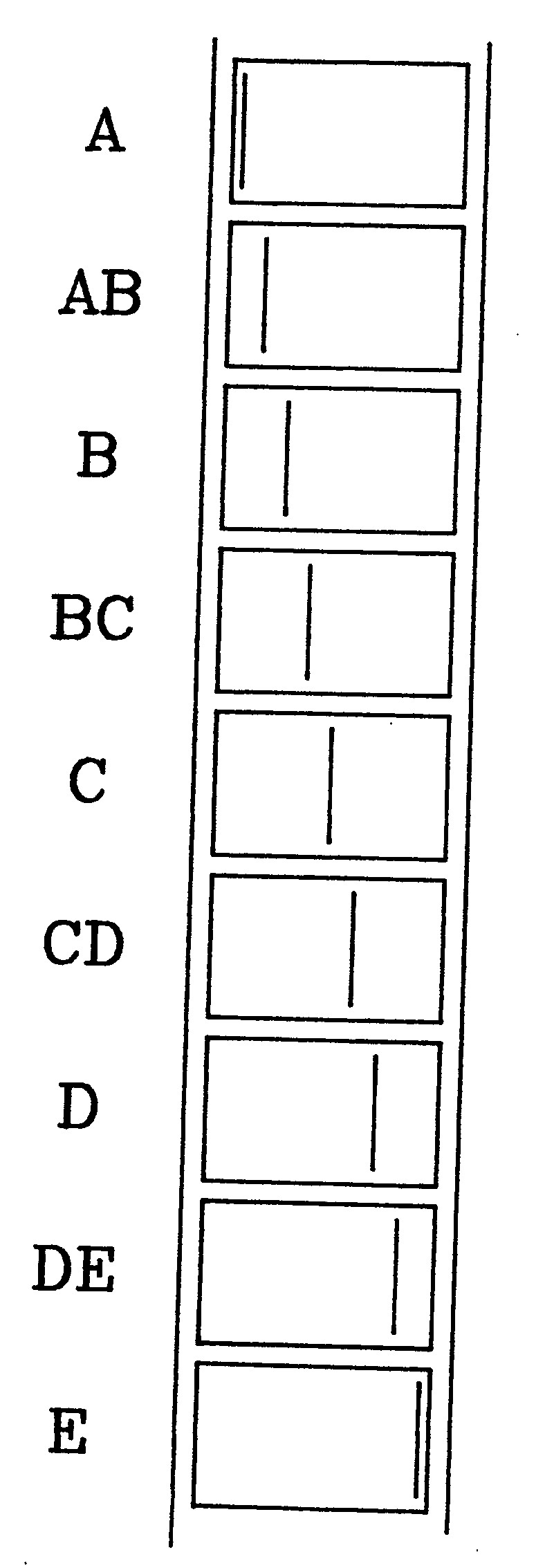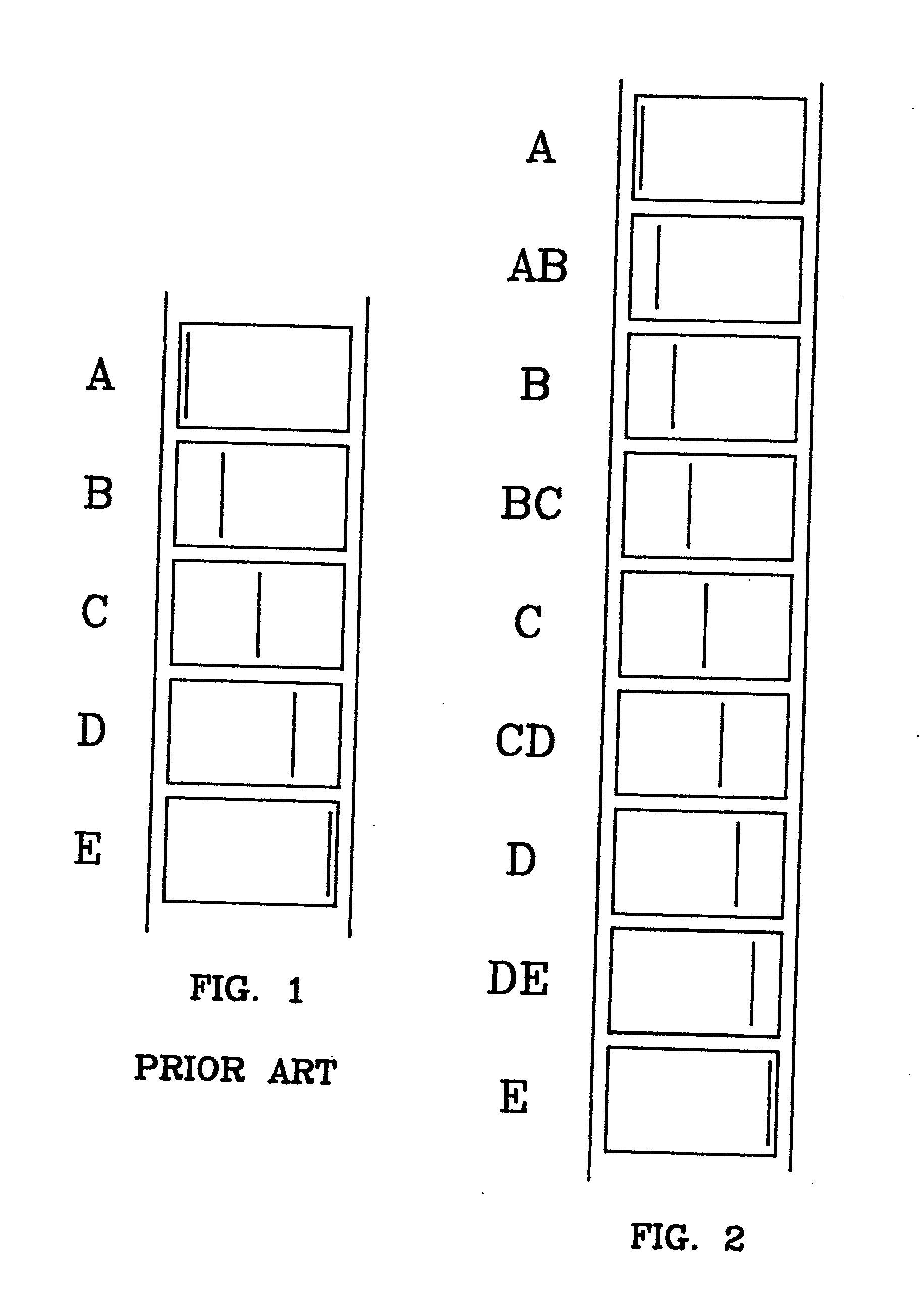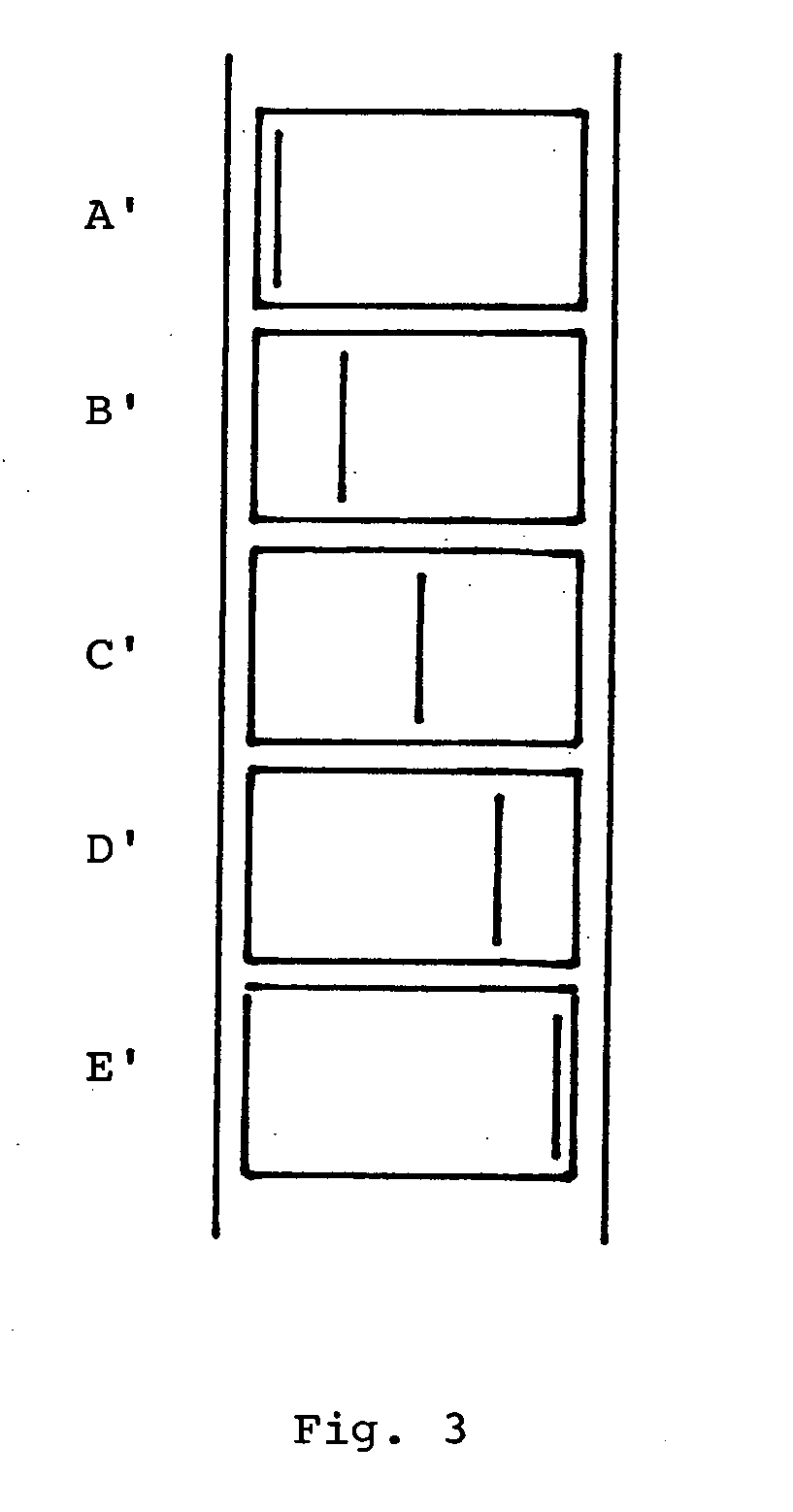Method for processing motion pictures at high frame rates with improved temporal and spatial resolution, resulting in improved audience perception of dimensionality in 2-D and 3-D presentation
a technology of temporal and spatial resolution and motion picture, which is applied in the direction of instruments, television systems, signal generators with optical-mechanical scanning, etc., can solve the problems that the method cannot realistically simulate the motion of the camera, and the projection at the higher frame rate cannot be achieved with analog film technology, so as to improve the image clarity and smoothness of motion, and enhance the effect of three-dimensional films
- Summary
- Abstract
- Description
- Claims
- Application Information
AI Technical Summary
Benefits of technology
Problems solved by technology
Method used
Image
Examples
Embodiment Construction
[0037]The preferred application of the invention is the enhancement of previously-produced motion pictures; usually motion picture films, for presentation that delivers a level of image clarity, spatial and temporal resolution, comparable to state-of-the art motion picture theatrical exhibition.
[0038]For enhancement of existing motion picture films to be shown at a frame rate of forty-eight frames per second of higher, the films are converted from analog to digital form by any means known in the conventional art. In addition, if a motion picture was originally photographed for exhibition in the 35 mm format, it is also necessary to add sufficient picture information to allow reformatting onto a 70 mm film format without loss of picture quality. The process for this enhancement, as described previously, comprises suppression of grain, interpolation of new transitional images generated by motion vectoring, reduction of motion blur and sharpening of the resultant image.
[0039]This techn...
PUM
 Login to View More
Login to View More Abstract
Description
Claims
Application Information
 Login to View More
Login to View More - R&D
- Intellectual Property
- Life Sciences
- Materials
- Tech Scout
- Unparalleled Data Quality
- Higher Quality Content
- 60% Fewer Hallucinations
Browse by: Latest US Patents, China's latest patents, Technical Efficacy Thesaurus, Application Domain, Technology Topic, Popular Technical Reports.
© 2025 PatSnap. All rights reserved.Legal|Privacy policy|Modern Slavery Act Transparency Statement|Sitemap|About US| Contact US: help@patsnap.com



